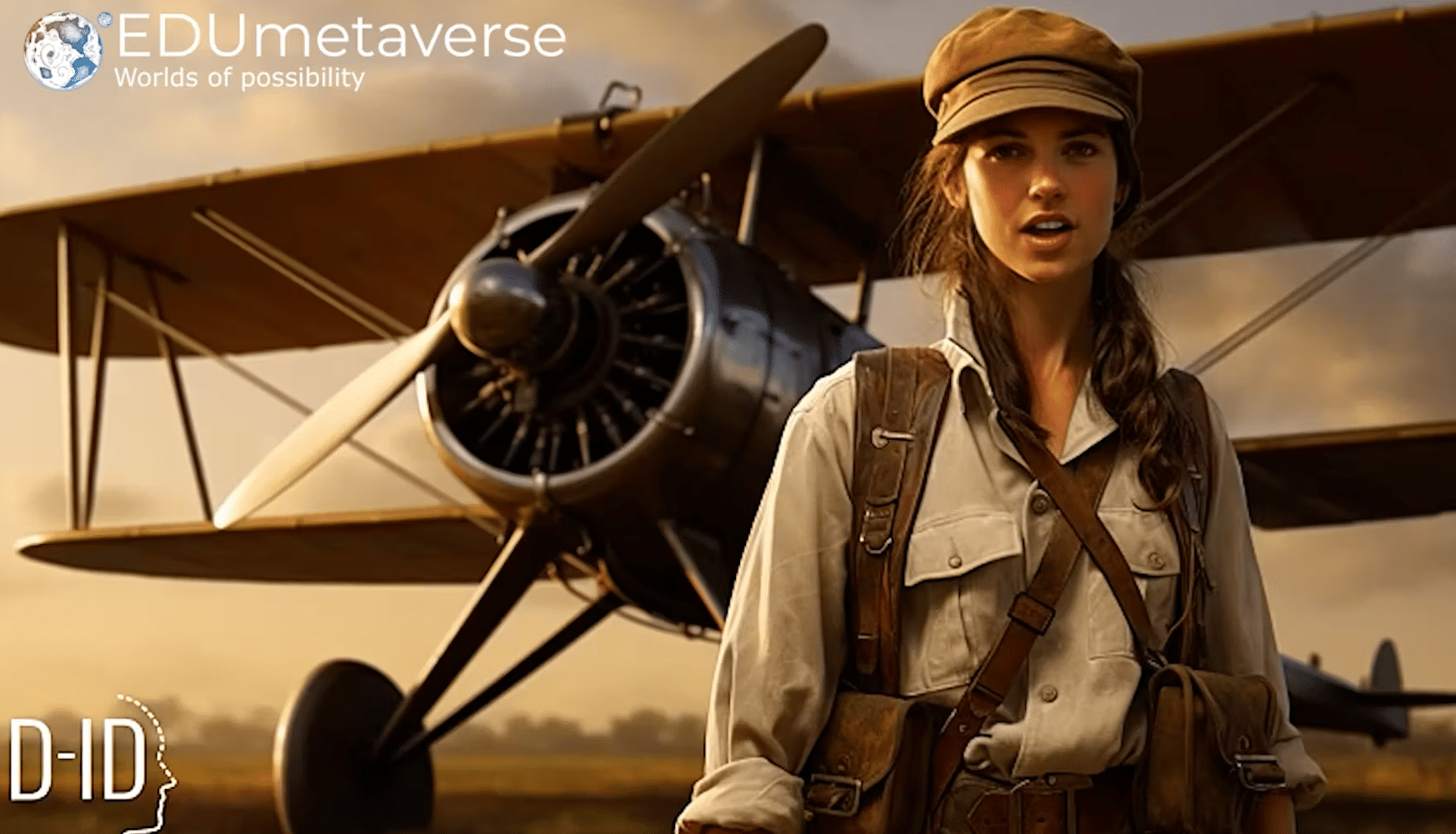Bringing AI Avatars into the Metaverse with Virtual Classrooms

At Edumetaverse we’ve been using D-ID for the last year and staff and students have been loving it. With a user-friendly interface and intuitive controls, anyone can create animated AI videos with just a few simple steps. Moreover, the app ensures high-quality output, producing realistic and engaging videos that capture the essence of the original image.
We work in the field of education, and D-ID opens up exciting creative possibilities. It enables educators to breathe life into historical characters, transforming static textbook descriptions into vivid, interactive experiences. Students can witness historical figures speak and move, making history come alive like never before. Moreover, for us, D-ID allows for the creation of video guides in our virtual worlds. These provide immersive learning experiences in subjects like geography, science, and literature.
By allowing students to voice their own AI constructs, the app encourages creativity and active participation in the learning process. Here at Edumetaverse, we’ve harnessed the power of D-ID to create immersive and informative experiences within our virtual worlds. Being able to add your own audio files has been a massive plus point for us. This allows us to create human-sounding avatars. One such example is the ‘Ancient Egypt’ experience, where multiple animated characters come to life and drive the narrative for students. As students explore the virtual world, they can interact with these characters, gaining valuable insights and information about the ancient civilization.
These AI-generated guides provide historical context, making the learning experience engaging and interactive. D-ID is now a big part of our content creation process and should be a first stop for anyone looking at generative AI.
Andrew Wright is the Director and Lead Education Consultant at EDUmetaverse & iTeacher. Andrew has over 20 years of experience in the classroom, and ten years teaching in 1-1 schools.


